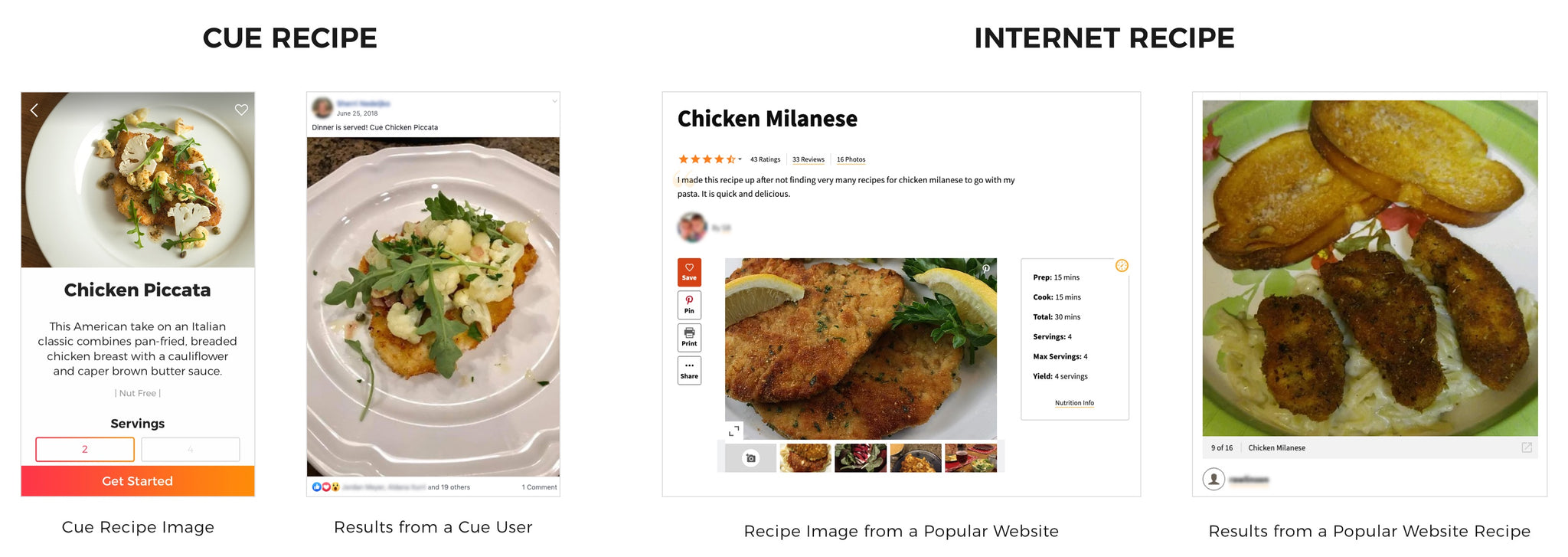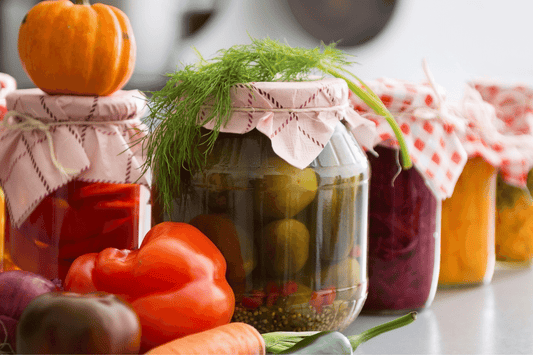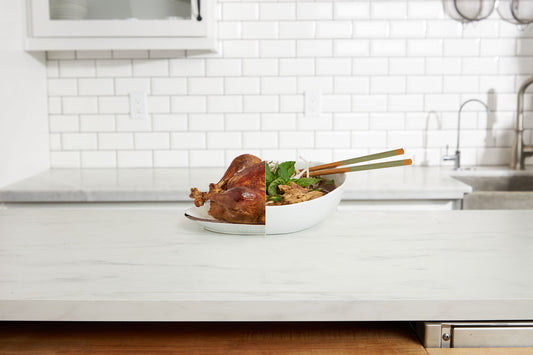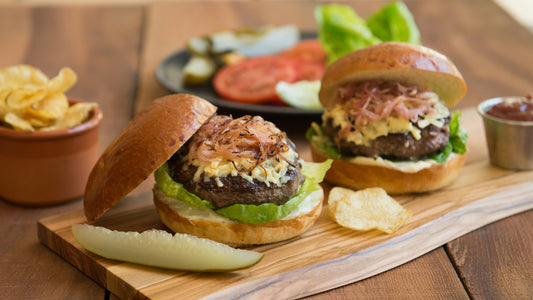Recipe 2.0: Where Results are the Key Ingredient
Recipes have been the key method of communicating culinary ideas forever. Well, not forever, but for a really really long time. A great recipe inspires, educates, and disseminates information to cooks so they can replicate the author’s intent. Tons of recipes fulfill most of these requirements but fall short on the most crucial aspect: ensuring the cook produces the intended result.
It is very common to find yourself at the end of a recipe wondering whether or not the food you just cooked is “correct”, let alone “good”. That’s the best-case scenario when you start with a good recipe. What about the tons of recipe red herrings? Recipes that look amazing, and promise you will be the next Julia Child, that ultimately fail. These are the kinds of recipes that were built for “inspiration”, not results, but they never say that, and unfortunately, they seem to be the easiest ones to find.
At Hestan Cue, we wanted to focus on solving both of these issues. We want to build a new class of recipe, a recipe that will ensure the results you get, are exactly what you expect. We call this Recipe 2.0! And, we want to use this new protocol to help you sort through other recipes to find the best recipes out there. We want to ensure you get the best possible recipe experience no matter what. One that is not only pretty, clear, and concise, but also one that is guaranteed to provide consistently great results, every time.
How Do We Do It?
Here at Hestan Cue, Recipe 2.0 starts with you guessed it- great recipes! For our team of professional chefs, their goal is to develop recipes that any home cook of any skill level can recreate. This doesn’t mean we were trying to make the easiest recipes, it means we were trying to make even the hardest recipes easy.
First, we need to acknowledge that what is natural to a professional chef, is not necessarily obvious to everyone else. To combat this, all of our recipes go through a battery of tests, from initial development and testing within the Culinary team and then more cooking by our larger team and Beta Testers. At every level, the Culinary team makes adjustments based on feedback to ensure the recipe is producing the right results. Even after the recipes are published, they are considered living documents, real user feedback is considered to update, improve and modify our recipes. This rigorous testing was the first step to building Recipe 2.0. Here’s a quick glance at the lifecycle of a recipe here at Hestan Cue...

Our meticulous testing methods led us to further recipe improvements. We introduced video step by step guidance, and temperature and time control. We learned that we needed to include pictures and videos in every step because the Chef’s intent and expectations were often unclear. Now, all of our recipes include videos with real content from the recipes, and you can see exactly what is supposed to be happening while you are cooking.

Secondarily we gave the recipe authors the ability to control the cook times and temperatures for each step. By setting defined cooking limits to each step the recipe author can guarantee results. Specifically, precision temperature control bridges the gap between home cooking and professional skills. And with Cue, you can set it to the precise temperature and let the pan do the work, every time with repeatable results, even in a hectic kitchen. No more guessing what medium or high is on your traditional stovetop. If you want to learn more about cooking with precision temperatures and what temperatures are best for certain culinary techniques, check out our Precision Cooking Temp Chart.
Cue Recipes Versus Others
As a cook using Recipe 2.0 for the first time, you can be certain that what the recipe is selling you, is exactly what you will get. Now, over or undercooked, questionable results and disappointing nights are a thing of the past! Recipe 2.0 is a big change to the recipe structure we have used for thousands of years. Is it worth it? You tell us, check out how these recipes stack up:
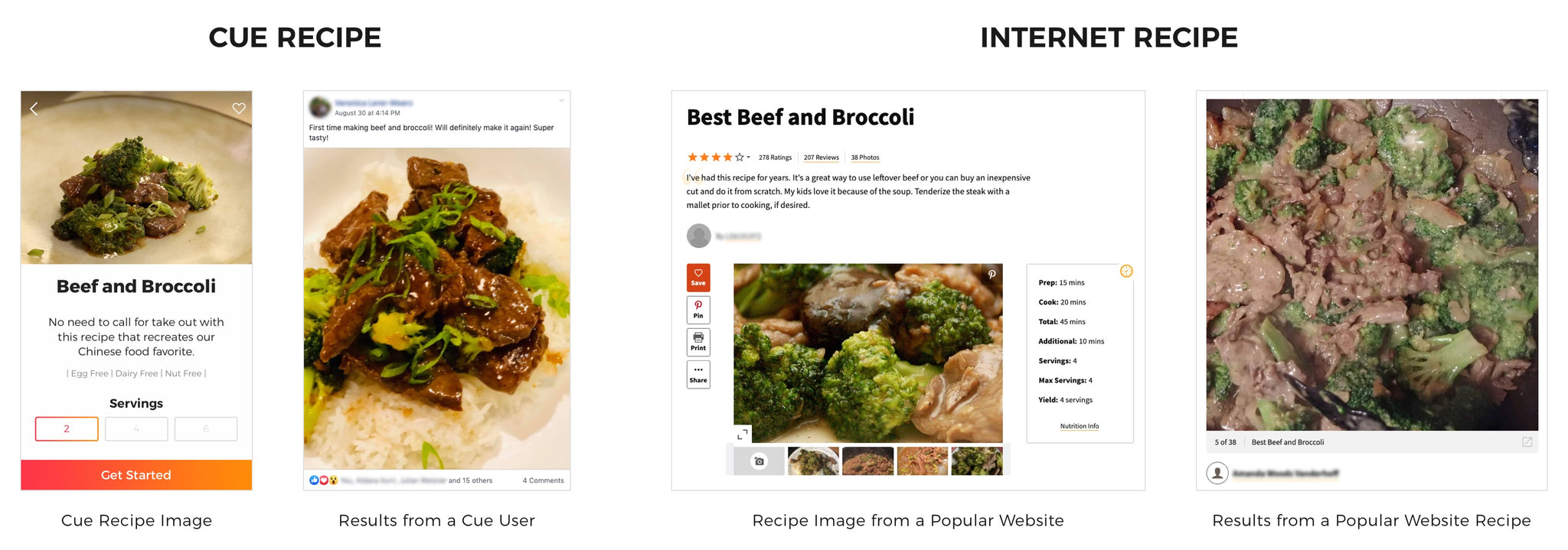
Best Practices for Selecting Recipes
Now we know we don’t have all of the answers yet. There is always room to learn. We have barely scratched the surface of all of the recipes in the world, and we probably never will. So, we took the time to build a set of guidelines that can help you vet new recipes. This way you can weed out the recipes that are there for clicking, and narrow in on the ones that are actually there for cooking.
Reputation
A well-known resource or professional in the field is always a good place to start. These are people or companies who have their name on the line with every recipe they release. Reputable sources will usually have curated content, tips from professionals in the field, and easy to follow instructions.
Pictures
A great man once said, “judge a recipe, not by the color contrast of its pictures, but by the character of its content”...or something like that. Many recipes have amazing pictures or videos online but don't actually produce the results they promise. When you are looking at a new recipe, skip the pictures and read the rest of the recipe first, if the recipe and comments pass muster, then look at the pictures for guidance.
Reviews
Read the comments! If you see many, “I love this idea” or, “can’t wait to make it” comments, it most likely means people have not actually cooked the recipe. This is great for the content creator, but not so great for you. If no one has cooked the recipe, it is much harder to figure out if it will actually work. Some of the most trustworthy blogs and recipe content sites have very useful comments, from pointing out missing ingredients to giving descriptions of preferred recipe substitutions.
Put it to the Test
When you are exploring a new blog or recipe site, look up a recipe you know. If you read a recipe you already know how to make, or at least try cooking a recipe whose results you know well, you can judge a site based on your own experience and expectations. If the recipe you know, just doesn’t sound right or doesn’t come out right, it is a good litmus test for the rest of the content. Perhaps go somewhere else for what you are looking for.
Cross Reference
If you are looking for a recipe you are unfamiliar with, cross-referencing multiple recipes is usually a good place to start. You can get a good idea for whether or not any single recipe is 'normal' for that kind of dish. We would like to caution you though, we have found that recipes online pull from one another without mentioning their sources, meaning you may find 20 ‘duplicate’ versions of the same recipe even though none of them may be right. This really skews our objectivity.
Trust your Gut
You have seen, watched, tasted, and cooked more than you give yourself credit for. If a recipe doesn’t feel right for whatever reason, pass on it. Or at least, hold it open in a separate tab and compare it to other recipes you find.
We actually fell into this trap when we were trying to find a recipe for Milano Cookies (look it up in the Cue app, they are crazy good). They clearly all passed the cross reference test, but almost all of the recipes we found didn’t pass our trust your gut test. We eventually realized, they were all copying each other! It was only after we reached the 10th “o” in “goooooooooooogle”, that we found a recipe that passed all of our tests. That’s what we based our recipe off of, and you’ll be happy we did.
Website or Database
There are a lot of sites that compile user-generated recipes and content into a database. These sites are a wonderful hub of ideas and inspiration, just as much as failures and desperation. Be extra careful of these sites, trust your gut, and read the reviews.
Here are a few examples of things we see as chefs, that are major red flags. These are two pictures from two different Crispy Skin Salmon Recipes:

If you are making Crispy Skin Salmon, your goal is to create crunchy yummy salmon skin. When you plate the salmon skin side down all of the juices and moisture from the fish will pool on the skin and make it soggy again. RED FLAG!!!! Questionable recipe, or at least questionable chef.
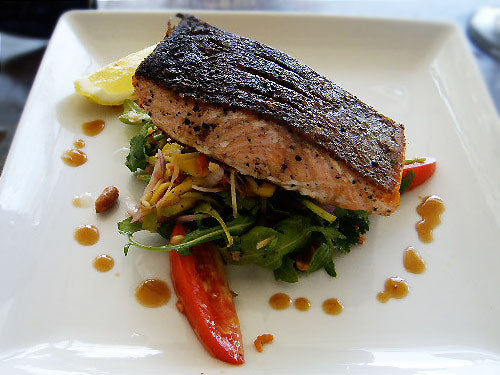 Yes, burnt is crispy, but not the crispy we are looking for. It is ok to burn stuff, we all do every once in a while, but to make that the hero image of their recipe, either they don’t know that that’s burnt. RED FLAG!! Or they don’t care, RED FLAG!! Or, even worse they want to convince you that burnt is the correct result...come on, we are adults here!
Yes, burnt is crispy, but not the crispy we are looking for. It is ok to burn stuff, we all do every once in a while, but to make that the hero image of their recipe, either they don’t know that that’s burnt. RED FLAG!! Or they don’t care, RED FLAG!! Or, even worse they want to convince you that burnt is the correct result...come on, we are adults here!
Anyone Can Cook
Our Culinary team’s favorite movie is Ratatouille. If you haven’t seen it, please do. One of the things that makes this movie so good is the simple message: anyone can cook. We believe this is 100% true. We want to give you all the tools, tips, and suggestions to achieve great results. We want you to feel confident and inspired in the kitchen. At Hestan Cue we don’t just post a recipe and hope for the best, we are constantly improving, updating and editing all our content with new ideas, better techniques, and better approaches. We care about your results because that drives us.
So put us to the test, download the Hestan Cue app for IOS and Android, and see what Recipe 2.0 is all about. Test us against your favorite weeknight meal, or use us to try something new! Show us what you do in our Hestan Cue-munity and give us some feedback, Recipe 2.0 doesn’t work without you! And most importantly, cook with confidence!



